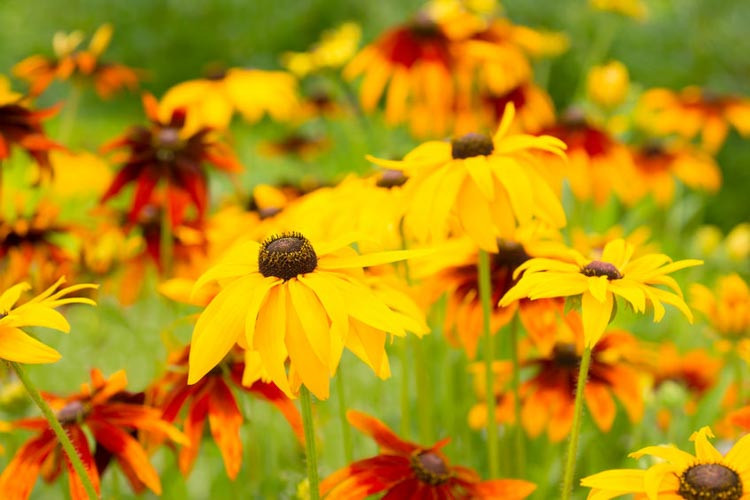Rudbeckia
Rudbeckia is a genus of flowering plants in the sunflower family, Asteraceae. Native to North America, this diverse group of plants includes annuals, perennials, and biennials that vary in size, color, and growing conditions.
Species: The genus includes over 20 species, including Rudbeckia hirta (Black-Eyed Susan), Rudbeckia fulgida (Orange Coneflower), and Rudbeckia triloba (Brown-Eyed Susan).
Hardy: Rudbeckia is a hardy plant that can survive winter temperatures in USDA zones 3-9, which covers most of the United States.
Height: Generally, Rudbeckia plants can grow anywhere from 1 to 8 feet tall (30-240 cm).
Flowers: The flowers are typically bright yellow or orange daisy-like flowers with dark brown or black centers, giving them their distinctive “black-eyed” appearance. Some species may have red or brown petals, and some may have multiple rows of petals.
Blooming season: Blooms occur from early summer to fall and provide a pop of color in the garden during the late summer months.
Growing conditions: The plants prefer full sun to partial shade and well-drained soil. Some species can tolerate drought and poor soil conditions, while others require moist soil and regular watering.
Attracts pollinators: The flowers are a great attractant for bees, butterflies, and other beneficial insects, making them a great choice for a pollinator garden.
Uses: Rudbeckia can be used in a variety of garden settings, including borders, mass plantings, and mixed perennial beds. The flowers can also be used in cut flower arrangements.

